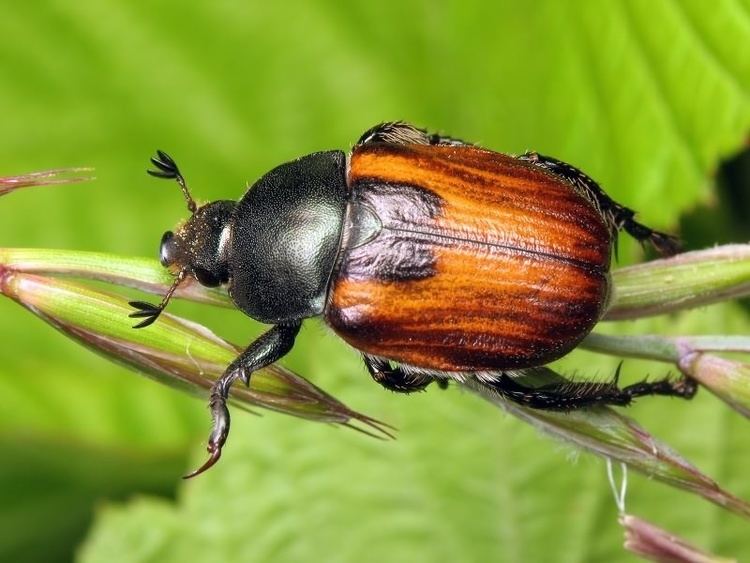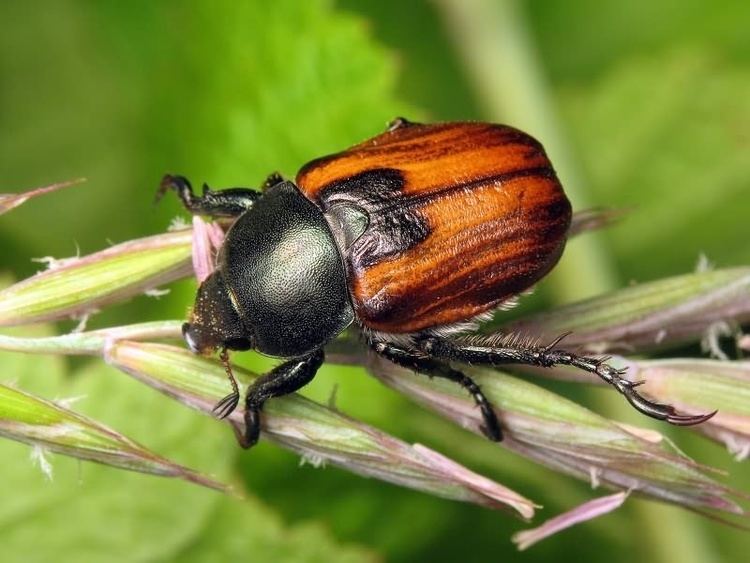Kingdom Animalia Higher classification Anisoplia | Order Coleoptera Genus Anisoplia Phylum Arthropoda Rank Species | |
Similar Beetle, Insect, Eurygaster integriceps, Zabrus tenebrioides, Loxostege sticticalis | ||
Anisoplia austriaca is the binomial name of a species of scarab beetle, a harmful pest of cereal crops. Its body length is 12–16 mm.
Contents

Area of distribution

Anisoplia is distributed in the steppe zones of Europe, Asia Minor, Iran. The beetle is a major pest in the lower and middle Volga and steppe regions of Ukraine, North Caucasus and Transcaucasia.
Life cycle

The beetle has a two-year development cycle. The larvae feed on plant roots and humus. The larvae pupate in late May. In late June, adult beetles surface from the soil.

The adult beetles feed on cereals such as rye, wheat or barley, consuming the more immature plants. Female beetles lay their eggs 10–12 days after emergence. Each cluster may contain up to 50 eggs. After three weeks the larvae hatch and the cycle begins anew.
Behaviour
The beetles prefer daylight and are most active in sunny weather. They appear on the plants in the morning; at night they crawl away to shelter in clods or cracks in the soil.
